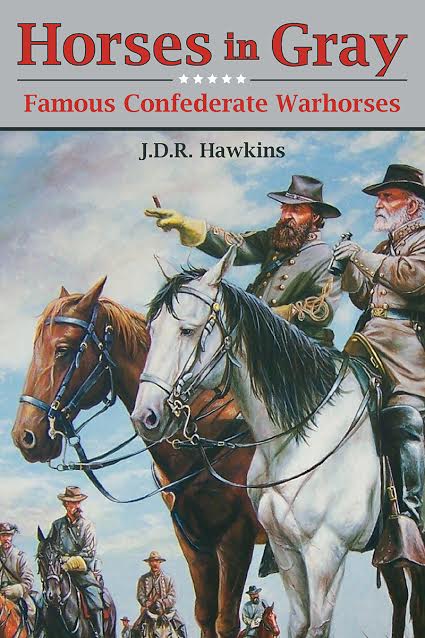Horses in Gray – A Gem Not to be Missed
J.D.R. Hawkins’ latest work is like a rare gem – something that doesn’t come along often but to be prized when discovered. The work’s rarity derives from its unique subject matter, its detailed research, and its reader-friendly story-telling.Notable throughout the entire book is Hawkins’ reverence and passion for horses. She covers in this book a subject I have never before seen in my readings of the American Civil War. Many stories have been told, some true and some not-so-much, of the exploits of Civil War generals. Largely forgotten, except in a few obscure cases, have been the exploits of the horses who made their heroics possible.Horses in Gray is so well documented that it could easily pass as a Master’s Degree thesis. However, the author never lets the documentation get in the way of providing a fascinating read. One becomes keenly aware of the strong bond between horse and rider that is never weakened by long marches, harsh weather, or the noise of battle. She presents the horses as loyal servants with personalities as unique and varied as those of the men who rode them, and the masters as caring owners who treat them as faithful companions, not mere tools of battle.Interwoven into the stories of the Confederate war horses and their riders are insightful vignettes of the actions they shared. Some of the actions were major ones such as the battles of Fredericksburg, Manassas, and Pittsburgh Landing, others largely forgotten except among military scholars and Civil War buffs – notably raids by John Mosby and Turner Ashby. As a student of the war, I was never before aware of the extent to which horses “changed sides” as the result of being captured or that General Grant, himself, rode a captured horse named Jeff Davis.The author of Civil War novels such as A Beckoning Hellfire and A Rebel Among Us does not disappoint with her foray into non-fiction. If you consider yourself even a casual student of the Civil War, or if you are a more serious scholar, Horses in Gray is a must read. I rate it five stars and look forward to more of Hawkins’ work.Greg Seeley
Goodreads author, Henry’s Pride

